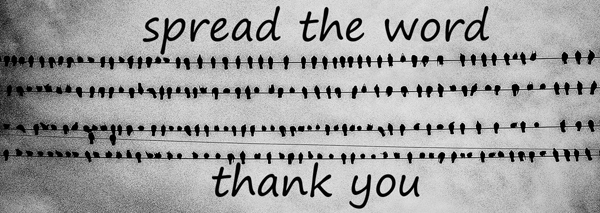
| WELCOME |
 |

comments, ephemera, speculation, etc. (protected political speech and personal opinion) 2020- 2020-09-15 b The Secret Lives of Neanderthals Is
it possible that Neanderthals had a
spiritual life?
Astonishing finds suggestive of shrine in a subterranean cave in the Aveyron continue to baffle anthropologists, says Rebecca Wragg Sykes When I studied anthropology back in the early 1980s, Neanderthals were still largely the bulk-browed brutes of yore, grunting in smoky caves and loping across the tundra. Their vanishing from the fossil record some 40,000 years ago was a result of competition, along with a little interbreeding, with our own forebears. The story, as I received it then, retained something of the racially hierarchical views at large when the first fossilised bones were recovered in Germany, from near the Neander river, in 1856. Neanderthals were made extinct by an altogether smarter creature. It was inevitable — the clue was in the name: Homo sapiens. Neanderthals have come a long way since. In the past few decades, there have been more finds in more caves, more bones and stone tools to measure, more middens to pick over, more articulations of skeletons to examine. Relativism has replaced hierarchy as the overall context for interpretation. But perhaps the most striking advance has been in the reach of analytical methods. Genetics, 3D imaging, the use of carbon-14 and strontium isotopes have all helped reveal intricate details of physiognomy and activity (how they sat, what they carried), as well as possible social structures. What it has also done is trigger a landslip of studies and academic papers which have buried any hope of popular understanding. Deeply involved in these studies herself, Rebecca Wragg Sykes has performed something extraordinary in distilling them into a commanding and wonderfully readable account. Her success is in leaving us with glimpses of real scenes, of imagined individuals and groups going about their daily lives. We are in the realm of archaeo-ethnography rather than speculative fiction (this is not Jean M. Auel’s Clan of the Cave Bear or William Golding’s The Inheritors); her evocations emerge from behind extensive passages of science. But the effect is surprisingly moving. The only regret is that if progress in Neanderthal studies continues at the same pace, Kindred will, at least in detail, soon become outdated. Deep in a cave in the Aveyron is a site that remains as baffling as the late Neolithic stone circles What we now know of Neanderthals is this. They were concentrated in western Eurasia, with isolated sites in Siberia and clusters in southern France and Iberia. Their brains were slightly larger than ours (though with a smaller frontal cortex and cerebelli). Their eyes and nostrils were also bigger, and implicitly more effective. Over their 350,000 year existence (ten times that of our own species), they experienced large oscillations in climate, as well as sudden eco-shocks. At various periods they hunted and ate elephants and mammoths, aurochs, giant horses and rhinos, mussels, dolphins and any number of nuts, seeds and pulses. Violence among them was rare, but accidental injury frequent. They built shelters from posts and rock, slept on mats, used coloured pigment for decorating shells. They understood the value of treating animal skins with oak tannins. They burnt bones as well as wood, and also coal. They were spectacularly good with stone tools, and their right-sided bias (as marked as highly trained cricketers or tennis players) arose from continuous specialist activities, vigorously scraping hides or knapping flints. A little less certain — but suggested ever more strongly with each find and study — is that Neanderthals had language, and that they were capable of collective planning (lighting bush fires, for instance, to drive prey towards them). They probably buried their dead, with a degree of ritual, and they probably smiled and loved and grieved. They appear to have valued particular sites in the landscape, possibly as places of group memory and tradition. It is still not clear exactly how they disappeared but a little of them survives, in 2-3 per cent of our own genome. Then about two-thirds of the way through the book, after measured chapters on diet and paleontology and lithics — whoosh! — a moment when everything changes. Three hundred metres into a cave in the Aveyron valley, south-west France, is a monument of deliberate and enigmatic purpose — ‘a place’, Wragg Sykes claims, ‘that goes beyond unique, into jaw-dropping’. Precise radiometric dating in 2013 places its construction at 174,000 years ago — early even by Neanderthal time, and long before the arrival of Homo sapiens. Two tonnes of stalagmites — more than 400 separate pieces — have been broken off, shaped and arranged in two circles. In some places the stones or ‘speleofacts’ have been upended as supports for small discs, which show evidence of having had fires lit on top of them. There is no apparent functional reason even for the site of the structure, which was too deep for habitation. It is as baffling, and as seductive for speculation, as the stone circles of the late Neolithic. It brings us closer to the Neanderthals as sentient beings than all the other studies combined. (read more) ______________________ Permission is hereby granted to any and all to copy and paste any entry on this page and convey it electronically along with its URL, ______________________ |
...
News and facts for
those sick and tired of the National Propaganda Radio
version of reality.
|
|||||
|

| If
you let them redefine words, they will control
language. If you let them control language, they will control thoughts. If you let them control thoughts, they will control you. They will own you. |
| © 2020 - thenotimes.com - All Rights Reserved |